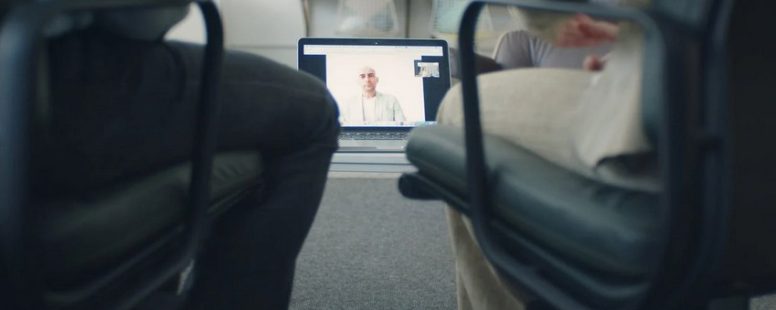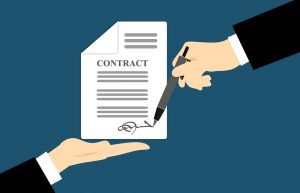Avoiding Buyer’s Remorse: Your Comprehensive Guide to Purchasing a Used Car
Buying a used car can feel like a thrilling adventure, but it can quickly devolve into a nightmare if you’re not well-prepared. Picture this: you find the perfect vehicle that catches your eye, only to discover weeks later that it’s riddled with hidden problems and costly repairs. Buyer’s remorse is all too common in used cars, leaving many frustrated and deceived. But fear not! Our comprehensive guide is here to equip you with essential tips and insider knowledge to navigate the process confidently.
From understanding critical inspections to negotiating like a pro, we’ll help you drive off the lot with peace of mind—so buckle up as we steer you toward making informed decisions and avoiding any regrets along the way.
Set Your Budget and Stick to It
Before you even start browsing for cars, you must know your budget. How much can you comfortably spend? Don’t forget to factor in extra costs like insurance, taxes, registration fees, and any repairs the car might need after purchase. A good rule of thumb is to leave some wiggle room in your budget for unexpected expenses. Stick to it once you clearly know what you can afford. It’s easy to get tempted by something a bit flashier or pricier, but staying within your budget will help you avoid financial stress.
Test Drive the Car

This step is non-negotiable. A test drive will give you a feel for how the car handles and whether it’s comfortable for you. Please pay attention to the way the engine sounds, how smoothly it shifts gears, and how it reacts when you brake. Test it in different driving conditions—on the highway, in traffic, and around corners—to get a good sense of its performance. Don’t forget to check that everything inside the car works properly. Try the air conditioning, radio, and power windows to ensure nothing is malfunctioning.
Do Your Research
Now that you know how much you will spend, it’s time to start researching. Make a list of cars that fit your needs—whether that’s fuel efficiency, space for a family, or something fun to drive. Then, look up those models’ reviews, reliability ratings, and average prices. Pay attention to common problems that tend to show up with specific makes and models. For example, some cars may be known for having transmission issues or higher-than-average repair costs. The more you know going in, the better equipped you’ll be to spot a good deal or steer clear of a potential lemon.
Inspect the Car’s Condition
Once you find a car that catches your eye, it’s time to check it out in person. Whether buying from a dealership or a private seller, thoroughly inspecting the vehicle is crucial. Look for signs of wear and tear, like dents, rust, or mismatched paint. It’s also intelligent to check the tires, lights, and windows. Pop the hood and take a look at the engine. Even if you’re not a car expert, you can usually tell if something looks out of place, like excessive dirt or leaks. Bring someone with car knowledge to help you inspect it if possible.
Check the Vehicle History Report
One of the most critical steps in buying a used car is checking its history. A vehicle history report from services like Carfax or AutoCheck will tell you whether the car has been in any accidents, how many owners it’s had, and if there are any outstanding recalls. This report can also reveal whether the vehicle has a clean title, meaning it hasn’t been salvaged or written off in the past. It’s always better to walk away from a deal if something in the history report raises a red flag, even if the car seems perfect in person.
Negotiate Like a Pro

Negotiating the price of a used car might feel intimidating, but it’s a normal part of the process. Research the car’s market value beforehand and be prepared to make …










 Although the focus of this National day is on loving your thighs, it’s important to
Although the focus of this National day is on loving your thighs, it’s important to 
 You may think your dog isn’t paying attention to your routine, but they are. Your pup needs predictability and consistency to have a sense of security and comfort. If you’re not able to stick to a normal schedule, you need to make sure that your dog is aware of any changes or disruptions so that they can adjust accordingly. According to experts from PetTags4Less, having a set routine for your pup can also help prevent anxiety and behavioral issues.
You may think your dog isn’t paying attention to your routine, but they are. Your pup needs predictability and consistency to have a sense of security and comfort. If you’re not able to stick to a normal schedule, you need to make sure that your dog is aware of any changes or disruptions so that they can adjust accordingly. According to experts from PetTags4Less, having a set routine for your pup can also help prevent anxiety and behavioral issues.
 Last but not least, let’s talk about the most common miscommunication between dog parents and their pups. Dogs love being petted, but they usually don’t like it when people approach them directly. Instead, try to practice patience and let your pup come to you on his terms. When he does, give him a nice chest rub, not a belly rub, to show that you appreciate him. Chest rubs are also a great way to show your affection and love while also teaching him manners. Now that you’ve learned five things that your dog really wants from you, it’s time to spend more quality time with your pup, let them know you care and always stay consistent to understand what they need from you truly.
Last but not least, let’s talk about the most common miscommunication between dog parents and their pups. Dogs love being petted, but they usually don’t like it when people approach them directly. Instead, try to practice patience and let your pup come to you on his terms. When he does, give him a nice chest rub, not a belly rub, to show that you appreciate him. Chest rubs are also a great way to show your affection and love while also teaching him manners. Now that you’ve learned five things that your dog really wants from you, it’s time to spend more quality time with your pup, let them know you care and always stay consistent to understand what they need from you truly.

 Getting a tarot reading can be a powerful experience. These readings can provide you with insight, clarity, and guidance about any situation or life choice that you may be facing. However, not every tarot reader is the same, so be sure to find someone experienced and qualified to get the most out of your reading. With this knowledge, you can make more informed decisions about your life and take steps toward a brighter future.…
Getting a tarot reading can be a powerful experience. These readings can provide you with insight, clarity, and guidance about any situation or life choice that you may be facing. However, not every tarot reader is the same, so be sure to find someone experienced and qualified to get the most out of your reading. With this knowledge, you can make more informed decisions about your life and take steps toward a brighter future.… If you and the other party agree to use an arbitrator, you can avoid the high costs of going to court. You will still have to pay the arbitrator’s fees, which are often much lower than what you would pay for a lawyer. In addition, arbitration is often quicker than going through the court system so that you can save on legal fees.
If you and the other party agree to use an arbitrator, you can avoid the high costs of going to court. You will still have to pay the arbitrator’s fees, which are often much lower than what you would pay for a lawyer. In addition, arbitration is often quicker than going through the court system so that you can save on legal fees. Arbitration can provide certainty. This is because you will know in advance what the rules of arbitration are and how the arbitrator will decide. This can be important when you are trying to resolve a complex dispute. In contrast, going to court can be more uncertain because you do not know how the judge will rule on your case.
Arbitration can provide certainty. This is because you will know in advance what the rules of arbitration are and how the arbitrator will decide. This can be important when you are trying to resolve a complex dispute. In contrast, going to court can be more uncertain because you do not know how the judge will rule on your case.
 One of the best things about online therapy is that it is accessible to everyone. You can access online therapy from anywhere in the world, as long as you have an internet connection. This means that you can access online therapy from the comfort of your own home or even from your office. You don’t have to worry about finding time to travel to a traditional therapy appointment. Another great thing about online therapy is that it is available 24/seven. This means that you can access online therapy any day or night. You can also access online therapy on your schedule. This is perfect for busy people who struggle to find time for traditional therapy appointments.
One of the best things about online therapy is that it is accessible to everyone. You can access online therapy from anywhere in the world, as long as you have an internet connection. This means that you can access online therapy from the comfort of your own home or even from your office. You don’t have to worry about finding time to travel to a traditional therapy appointment. Another great thing about online therapy is that it is available 24/seven. This means that you can access online therapy any day or night. You can also access online therapy on your schedule. This is perfect for busy people who struggle to find time for traditional therapy appointments. When you are in therapy, you tend to talk about things that you may not usually discuss with people in your life. This can be difficult to do in person, but it can be easier to open up online. You may find that you can share more freely and openly online than you would in person, leading to greater insights about yourself. Therapy can also help you learn more about yourself and how to cope with difficult situations. Many people find that they can manage their emotions better after attending therapy, as they have a greater understanding of themselves. You may also find that you can better understand other people’s perspectives and empathize with them.
When you are in therapy, you tend to talk about things that you may not usually discuss with people in your life. This can be difficult to do in person, but it can be easier to open up online. You may find that you can share more freely and openly online than you would in person, leading to greater insights about yourself. Therapy can also help you learn more about yourself and how to cope with difficult situations. Many people find that they can manage their emotions better after attending therapy, as they have a greater understanding of themselves. You may also find that you can better understand other people’s perspectives and empathize with them.
 This is one of the most common misconceptions about psychics. While some fraudulent psychics exist, not all of them are trying to scam you. Many psychics offer their services for free or at a very low cost. They do this because they want to help people, not because they want to make money.
This is one of the most common misconceptions about psychics. While some fraudulent psychics exist, not all of them are trying to scam you. Many psychics offer their services for free or at a very low cost. They do this because they want to help people, not because they want to make money. Finally, one of the most common misconceptions about psychics is that they can predict the future. While they may be able to see specific events in your future, they cannot tell you exactly what will happen and when. It is because the future is constantly changing, and it is impossible to know what will happen.
Finally, one of the most common misconceptions about psychics is that they can predict the future. While they may be able to see specific events in your future, they cannot tell you exactly what will happen and when. It is because the future is constantly changing, and it is impossible to know what will happen.
 One of the most important things you can do for your mental health is understanding your insurance coverage. This way, you will know what is covered and what is not. You will also be able to find out if there are any discounts or programs that can help you save money on mental health care. If you do not have insurance, there are still plenty of affordable ways to get your consideration. Keep reading for more information.
One of the most important things you can do for your mental health is understanding your insurance coverage. This way, you will know what is covered and what is not. You will also be able to find out if there are any discounts or programs that can help you save money on mental health care. If you do not have insurance, there are still plenty of affordable ways to get your consideration. Keep reading for more information.
 Another essential factor to consider is the quality of the seeds that the bank offers. Not all banks offer high-quality seeds, so it’s essential to do your research and find out which ones do.
Another essential factor to consider is the quality of the seeds that the bank offers. Not all banks offer high-quality seeds, so it’s essential to do your research and find out which ones do.
 Psychotherapy is the most common type of service that virtual counselors offer. It involves meeting with a therapist online and discussing your problems. The therapist will help you understand your thoughts and feelings and give you advice on how to deal with them. This type of therapy can be beneficial for people who find it difficult to talk about their problems face-to-face. Virtual counselors also offer other services such as anxiety counseling, addiction counseling, and marriage counseling.
Psychotherapy is the most common type of service that virtual counselors offer. It involves meeting with a therapist online and discussing your problems. The therapist will help you understand your thoughts and feelings and give you advice on how to deal with them. This type of therapy can be beneficial for people who find it difficult to talk about their problems face-to-face. Virtual counselors also offer other services such as anxiety counseling, addiction counseling, and marriage counseling. For people who cannot leave their homes, virtual occupational therapy can be a great option. This type of therapy helps you regain your independence by teaching you how to do everyday tasks such as cooking and cleaning. A therapist will provide you with exercises and advice over the internet, and you can complete them at home. Many virtual therapists are well-trained in both occupational therapy and virtual counseling.
For people who cannot leave their homes, virtual occupational therapy can be a great option. This type of therapy helps you regain your independence by teaching you how to do everyday tasks such as cooking and cleaning. A therapist will provide you with exercises and advice over the internet, and you can complete them at home. Many virtual therapists are well-trained in both occupational therapy and virtual counseling.
 Keynote speakers are experts and can offer your unparalleled audience insights into their topic of choice. When you book them, you are guaranteed an expert presentation that will be informative and engaging. In addition the speakers can impact your audience in a deep and meaningful way.
Keynote speakers are experts and can offer your unparalleled audience insights into their topic of choice. When you book them, you are guaranteed an expert presentation that will be informative and engaging. In addition the speakers can impact your audience in a deep and meaningful way. If you have chosen a specific theme for your event, finding the right keynote speaker is essential. A great speaker can complement your event’s theme perfectly and help engage attendees on a deeper level. When choosing, don’t just go with the first one that you come across. Take the time to research different speakers and find a perfect fit for your event. By booking a motivational speaker, you can ensure that your event will be successful and memorable.
If you have chosen a specific theme for your event, finding the right keynote speaker is essential. A great speaker can complement your event’s theme perfectly and help engage attendees on a deeper level. When choosing, don’t just go with the first one that you come across. Take the time to research different speakers and find a perfect fit for your event. By booking a motivational speaker, you can ensure that your event will be successful and memorable.
 As we all know, our loved ones who have passed on are always with us. They may not be in the physical world anymore, but they sure do exist and can communicate with you if given a chance! Taking an online psychic reading consultation is one of the best ways to connect and communicate with your ancestors or other spirits that you care about. This way, you can ask for guidance or answers for several problems in your life that need your ancestors.
As we all know, our loved ones who have passed on are always with us. They may not be in the physical world anymore, but they sure do exist and can communicate with you if given a chance! Taking an online psychic reading consultation is one of the best ways to connect and communicate with your ancestors or other spirits that you care about. This way, you can ask for guidance or answers for several problems in your life that need your ancestors. This one may seem self-explanatory, but many benefits come with no physical touch! If you have ever had a psychic reading before, you know how hard it is to contact the reader. They might be busy doing tasks for others or want some time off. Whatever they are up to, if you want to get a reading from them, you usually have to go through a lot of trouble. With online psychic readings, though, it’s as easy as sending an email! You don’t have to leave your house, wait in line or anything like that. All you need is an internet connection, and you’re good to go!
This one may seem self-explanatory, but many benefits come with no physical touch! If you have ever had a psychic reading before, you know how hard it is to contact the reader. They might be busy doing tasks for others or want some time off. Whatever they are up to, if you want to get a reading from them, you usually have to go through a lot of trouble. With online psychic readings, though, it’s as easy as sending an email! You don’t have to leave your house, wait in line or anything like that. All you need is an internet connection, and you’re good to go!


 Sometimes, engaging in sports can be dangerous. People experience muscle and tissue damages, and these are some of the things that most athletes dread because it limits them from advancing their careers. Furthermore, other activities can lead to injuries of the muscles, and the best way to ensure that you are always in good form is to ensure that you get rid of those injuries as fast as possible. Legal steroids regulate the production of cortisol in the body, which helps the body recuperate quickly.
Sometimes, engaging in sports can be dangerous. People experience muscle and tissue damages, and these are some of the things that most athletes dread because it limits them from advancing their careers. Furthermore, other activities can lead to injuries of the muscles, and the best way to ensure that you are always in good form is to ensure that you get rid of those injuries as fast as possible. Legal steroids regulate the production of cortisol in the body, which helps the body recuperate quickly. It is common to see people spend a lot of their time trying to ensure that they build big muscles but in vain. Although there are several natural ways that you can adopt, such as eating the proper diet and hiring a personal trainer to help achieve your objectives, you need to understand that legal steroids are great in promoting the fast development of muscles. Most people who have had an opportunity to use legal steroids recorded a lot of improvement in muscle development. Therefore, it means that if you use steroids in the right way, you should expect to see results as soon as possible.
It is common to see people spend a lot of their time trying to ensure that they build big muscles but in vain. Although there are several natural ways that you can adopt, such as eating the proper diet and hiring a personal trainer to help achieve your objectives, you need to understand that legal steroids are great in promoting the fast development of muscles. Most people who have had an opportunity to use legal steroids recorded a lot of improvement in muscle development. Therefore, it means that if you use steroids in the right way, you should expect to see results as soon as possible. Legal steroids also play a significant role when it comes to weight reduction. Although most overweight people are always dedicated to ensuring that they can lose weight fast, the truth is that only a few get to accomplish their weight loss objectives. Most research on legal steroids indicates that alternatives to legal steroids can be very instrumental in reducing body fats.
Legal steroids also play a significant role when it comes to weight reduction. Although most overweight people are always dedicated to ensuring that they can lose weight fast, the truth is that only a few get to accomplish their weight loss objectives. Most research on legal steroids indicates that alternatives to legal steroids can be very instrumental in reducing body fats.
 Most dog collars are made of either nylon or leather. These materials determine the cost, functionality, comfort, and appearance. Hence, there is a need to know the pros and cons of each material to ensure you make the right decision.
Most dog collars are made of either nylon or leather. These materials determine the cost, functionality, comfort, and appearance. Hence, there is a need to know the pros and cons of each material to ensure you make the right decision. A dog collar allows you to show off your personality and that of the dog. That is because your dog will wear the collar 24/7. Purchasing one that is comfortable is quite important, especially when it suits your dog’s personality. Nowadays, there are several designs and styles to choose from. If your dog is happiest when outdoors, then you should get a collar that reflects that.
A dog collar allows you to show off your personality and that of the dog. That is because your dog will wear the collar 24/7. Purchasing one that is comfortable is quite important, especially when it suits your dog’s personality. Nowadays, there are several designs and styles to choose from. If your dog is happiest when outdoors, then you should get a collar that reflects that.
 The first important factor you should consider is the type of resources a logistics company has. It is crucial to note that not all logistics companies have the same capabilities. Therefore, you must select a company that can safely transport the type of goods you need to be transported. The ideal logistics provider should have the required workforce and machinery needed to transport your goods.
The first important factor you should consider is the type of resources a logistics company has. It is crucial to note that not all logistics companies have the same capabilities. Therefore, you must select a company that can safely transport the type of goods you need to be transported. The ideal logistics provider should have the required workforce and machinery needed to transport your goods. It is essential to consider the level of experience of a logistics company before making a choice. It is crucial to note that logistics providers with vast experience tend to have vital skills in providing quality service. This does not mean some companies that are new or have little experience will not necessarily offer excellent services when you hire them. However, there is a higher chance that an experienced logistic provider will be better than a logistics service that is new to the game.
It is essential to consider the level of experience of a logistics company before making a choice. It is crucial to note that logistics providers with vast experience tend to have vital skills in providing quality service. This does not mean some companies that are new or have little experience will not necessarily offer excellent services when you hire them. However, there is a higher chance that an experienced logistic provider will be better than a logistics service that is new to the game.
 One of the main reasons why bunnies make excellent pets for most people is that they do not make lots of noises like other common pets. Many people these days live in cities in apartments that have many tenants. It can be frustrating when you have a pet that makes lots of noises in such living conditions.
One of the main reasons why bunnies make excellent pets for most people is that they do not make lots of noises like other common pets. Many people these days live in cities in apartments that have many tenants. It can be frustrating when you have a pet that makes lots of noises in such living conditions. Since bunnies are not common pets, many people do not know interesting facts like they have personalities. It is crucial to note that many animals do have personalities, and you need to spend some time with them to know the kind of personalities they have. For example, some bunnies tend to be full of energy and playful. On the other hand, other bunnies have a shy personality.
Since bunnies are not common pets, many people do not know interesting facts like they have personalities. It is crucial to note that many animals do have personalities, and you need to spend some time with them to know the kind of personalities they have. For example, some bunnies tend to be full of energy and playful. On the other hand, other bunnies have a shy personality.


 When you plan to start a small business, it is advisable to spare your free time and money to focus on the type of attorney you need. It is advisable to note that most business lawyers can handle the crucial business information that you need. Ideally, they can create an LLC or a corporation, draft standard business contracts, and put together a partnership agreement. For instance, if you need a trademark or have troubling questions about tax, ensure you hire an attorney specializing in your area of need.
When you plan to start a small business, it is advisable to spare your free time and money to focus on the type of attorney you need. It is advisable to note that most business lawyers can handle the crucial business information that you need. Ideally, they can create an LLC or a corporation, draft standard business contracts, and put together a partnership agreement. For instance, if you need a trademark or have troubling questions about tax, ensure you hire an attorney specializing in your area of need. When hiring a reliable and professional business lawyer, it is advisable to take your time and consider checking on the fee structure they offer. Over the past few years, most business attorneys worked on an hourly basis, which means that you should pay your lawyer hourly. However, this is not the case since most attorneys offer fixed services. Therefore, discuss the rates and choose a lawyer with affordable rates.
When hiring a reliable and professional business lawyer, it is advisable to take your time and consider checking on the fee structure they offer. Over the past few years, most business attorneys worked on an hourly basis, which means that you should pay your lawyer hourly. However, this is not the case since most attorneys offer fixed services. Therefore, discuss the rates and choose a lawyer with affordable rates.
 The use of a wrong lighter will destroy the flavor of a cigar much quicker than any other act. By using a Zippo style lighter, the cigar is filled with the taste of lighter fluid. When you need to use a lighter, it is advisable to use soft flame or butane torch lighter. Besides, some of the long-time smokers object these lighters and use cedar stick or wooden matches from the box. This is based on the claim that cardboard matches have a distasteful taste, which lasts not only in the mouth but also throughout the cigar.
The use of a wrong lighter will destroy the flavor of a cigar much quicker than any other act. By using a Zippo style lighter, the cigar is filled with the taste of lighter fluid. When you need to use a lighter, it is advisable to use soft flame or butane torch lighter. Besides, some of the long-time smokers object these lighters and use cedar stick or wooden matches from the box. This is based on the claim that cardboard matches have a distasteful taste, which lasts not only in the mouth but also throughout the cigar. When either new to cigar smoking or being an experienced smoker, it is better to consider a milder, longer, and fatter cigar. This is because short, thin cigars emit a hotter and more intense smoke. One puff or so every minute should keep it lit and make sure that it does not become too hot.
When either new to cigar smoking or being an experienced smoker, it is better to consider a milder, longer, and fatter cigar. This is because short, thin cigars emit a hotter and more intense smoke. One puff or so every minute should keep it lit and make sure that it does not become too hot.













 If you have a lot of paper files that you do not have room for any more, you need to think about renting storage space offsite. Since the files that keep may be needed for documentation at later times, it is not practical for your business to completely discard them. Therefore, the offsite storage space will help to serve multiple purposes, including finding secure offsite storage that can be accessed at any time, and a means to clear the office of files that are not used in the day to day operations.
If you have a lot of paper files that you do not have room for any more, you need to think about renting storage space offsite. Since the files that keep may be needed for documentation at later times, it is not practical for your business to completely discard them. Therefore, the offsite storage space will help to serve multiple purposes, including finding secure offsite storage that can be accessed at any time, and a means to clear the office of files that are not used in the day to day operations.




 Enjoy Your Time
Enjoy Your Time

 are a common thing when you choose to keep your items with particular companies. Get to know the history of the self-storage company you want to choose to reduce the chances of this happening. Keeping your things in a self-storage unit can benefit your business in several ways which include:
are a common thing when you choose to keep your items with particular companies. Get to know the history of the self-storage company you want to choose to reduce the chances of this happening. Keeping your things in a self-storage unit can benefit your business in several ways which include: their risk of getting lost. You should store them in a self-storage unit. These are places that are heavily guarded and proper surveillance systems installed to lower the risk of items getting lost. All your goods will be well-secured when you decide to keep them in a self-storage unit.…
their risk of getting lost. You should store them in a self-storage unit. These are places that are heavily guarded and proper surveillance systems installed to lower the risk of items getting lost. All your goods will be well-secured when you decide to keep them in a self-storage unit.…




 Many people are enchanted by the idea of taking online questionnaires since many platforms offer money, ranging from $50 to $150. The offer is indeed tempting that many people begin to make it their daily agenda. However, it is not a wise thing to make it your only source of income. When it comes to the question of why it is so, the answer relates to its unpredictable nature. Online surveyors need to make sure that the questionnaire takers possess certain qualities and characteristics, and it is something that not all people can do. Besides, you cannot expect to earn much money only by depending on such platforms only.
Many people are enchanted by the idea of taking online questionnaires since many platforms offer money, ranging from $50 to $150. The offer is indeed tempting that many people begin to make it their daily agenda. However, it is not a wise thing to make it your only source of income. When it comes to the question of why it is so, the answer relates to its unpredictable nature. Online surveyors need to make sure that the questionnaire takers possess certain qualities and characteristics, and it is something that not all people can do. Besides, you cannot expect to earn much money only by depending on such platforms only.



